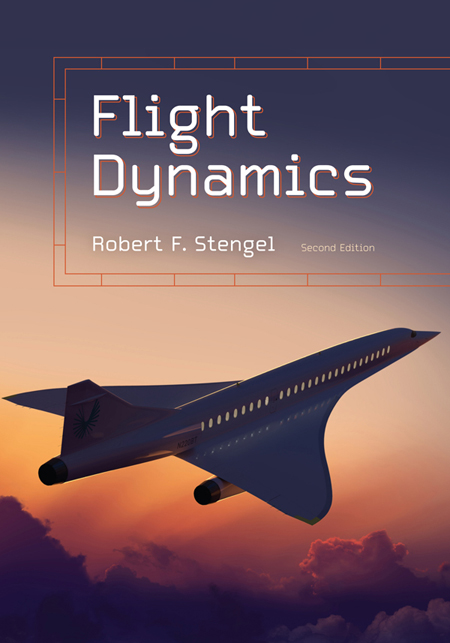
Three longitudinal paths are typical of paper airplane flight: constant-angle descent, vertical oscillation, and loop. Numerically integrating the equations of our mathematical model produces these paths. Four cases are simulated: a) equilibrium glide at maximum lift-drag ratio (L/D), b) oscillating glide due to zero initial flight path angle, c) increased oscillation amplitude due to increased initial speed, and d) loop due to a further increase in launch speed. In all cases, angle of attack is fixed at 9.3 deg, yielding the best L/D (5.2) for the configuration. This angle of attack produces the most shallow equilibrium glide slope (-11 deg) and a constant speed of 3.7 m/s. The equilibrium trajectory is represented by a straight descending path (Case a).
Obtaining this smooth, linear path is dependent on starting out with exactly the right speed and angle; Case b illustrates that having the right speed but the wrong initial angle perturbs the dynamic system, introducing a lightly damped oscillation about the equilibrium path. The period of the oscillation is 1.7 sec, and the wave shape is very nearly sinusoidal.
The initial-condition perturbation is increased in Case c, where the zero initial angle is retained, and the speed is increased. The vertical oscillation has greater height, speed, and angle amplitude, and the wave shape is perceptibly scalloped in the first two variables. Nevertheless, the rate of amplitude decay and the period are about the same as in the previous case. Further increasing the launch speed results in a loop, followed by sharply scalloped, decaying undulations with a 1.7-sec period (Case d). The loop provides an upper limit on the vertical oscillations that can be experienced by an airplane with fixed control settings.
You can replicate these flight paths with your own paper airplane, although you are not likely to get identical flight test results. The aerodynamic model used here is approximate, and the weight and dimensions of your airplane will be slightly different. It is difficult to trim the paper plane precisely, but it is relatively easy to sweep a range of values by bending the wing's trailing edge up or down. Similarly, launching by hand produces variable starting conditions, and it probably is not possible to launch a paper airplane at speeds much above 5 m/s without inducing significant aeroelastic deformations to the structure, changing its aerodynamics. Perhaps most important, attitude dynamics (not modeled above), play a role, particularly in large-amplitude maneuvers such as the loop. It is tricky to loop the classic dart-shaped paper airplane in practice, but other designs can be looped readily.
Flight Dynamics, Second Edition, 2022.
http://www.stengel.mycpanel.princeton.edu/PaperPlane.html